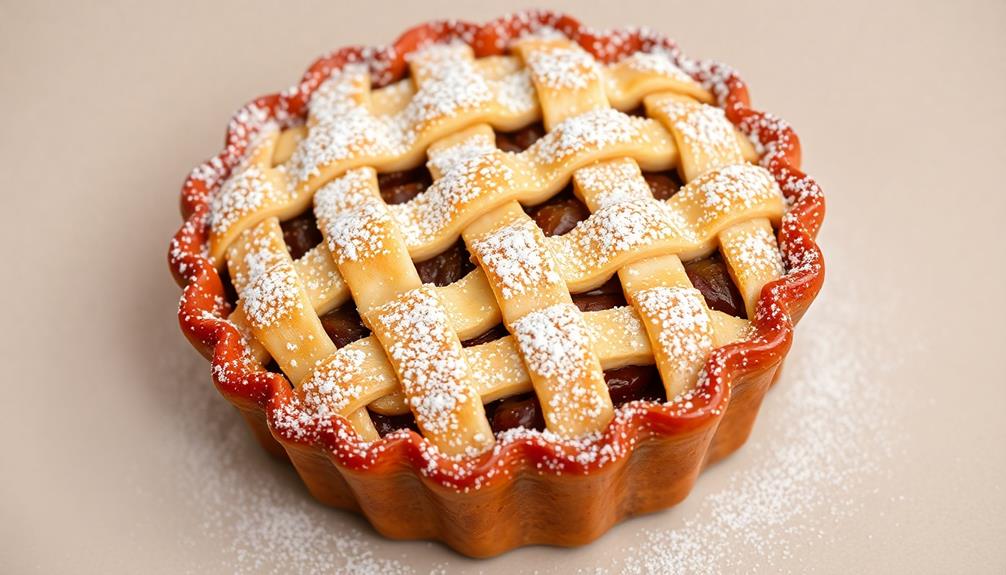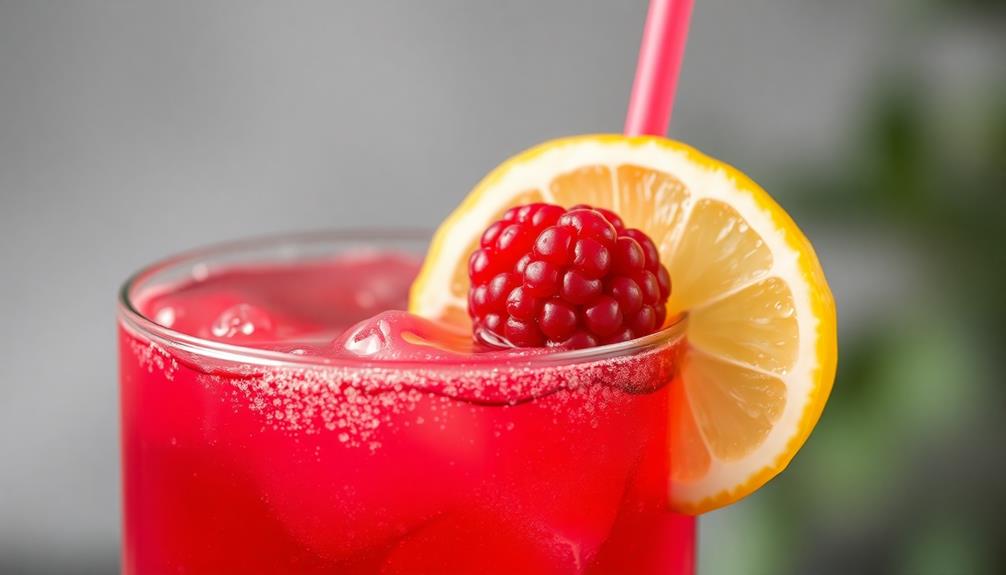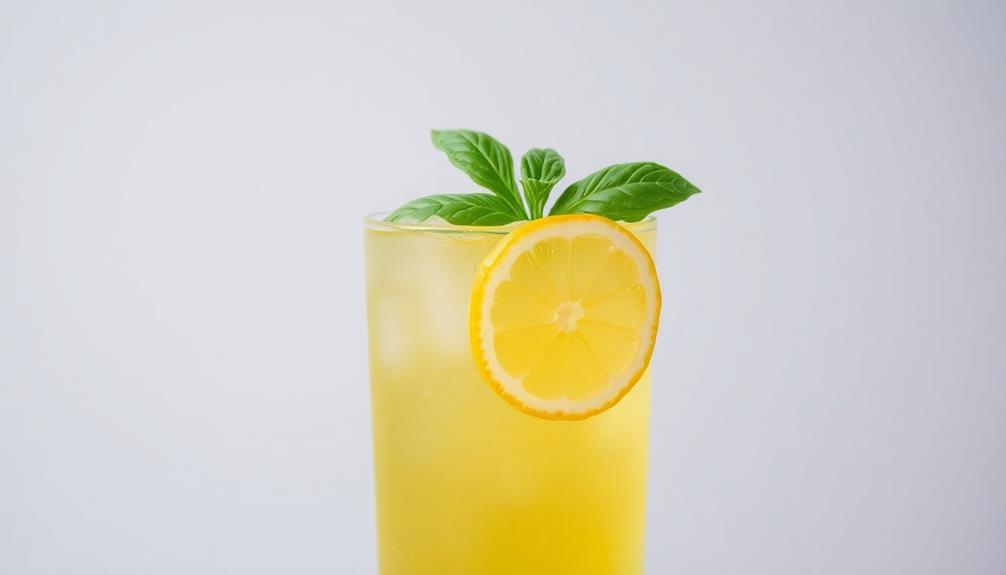Imagine standing amidst rolling hills covered with lush vineyards, the sun casting a golden glow over the endless rows of grapevines. As you take a deep breath, the sweet aroma of ripening fruits dances in the air, inviting you to savor every moment. This is the allure of wine country, a place where time slows down, and every sip tells a story. Whether you’re a seasoned wine enthusiast or just beginning your exploration of wine travel experiences, the best wine country holds a treasure trove of memories waiting to be made.
From the iconic valleys of Napa to the hidden gems in Sonoma, each destination offers its own unique charm, dotted with family-owned wineries that pour their hearts into every bottle. Picture yourself enjoying an unforgettable pairing of wine and cuisine, or exploring the captivating landscapes that inspired generations of artists and writers. With an abundance of options, this guide will be your companion in uncovering the magic of wine country, ensuring that your visit is filled with delightful discoveries and meaningful connections.
Key Takeaways
- 95% of wineries in Napa Valley are family-owned and operated, offering a personal touch to each tasting.
- Each of Napa Valley’s 16 unique appellations boasts its own microclimates and terrain, contributing to distinct wine profiles.
- Both Sonoma Valley and Napa Valley feature a mix of history, fine dining, and breathtaking sights for visitors to enjoy.
- Exploration of legendary locations such as Jack London State Historic Park enhances your wine country experience.
- World-class wineries in Healdsburg are at the meeting point of three top winegrowing regions in Sonoma County.
Exploring the Best Wine Country Destinations
When you think of the best wine country in the United States, a few regions stand out for their exceptional offerings and experiences. Venture into Sonoma County, Santa Barbara, and Napa Valley to discover the top wine destinations that promise unforgettable memories.
Why Sonoma County Should Be Your First Stop
Choosing Sonoma County as your initial destination is a no-brainer. This area is renowned for its diverse range of varietals and the welcoming atmosphere that invites visitors to indulge in exceptional winemaking. From boutique wineries to sprawling estates, you’ll find more than 425 wineries sprinkled across this stunning landscape. The local wine scene is vibrant, offering everything from tastings in unique settings to engaging events that show off the beauty of Sonoma County.
Santa Barbara: A Hidden Gem in California Wine Country
Santa Barbara remains one of the hidden gems among the top wine destinations. Its urban wine trail boasts a myriad of diverse wineries and tasting rooms, making it a delightful stop for enthusiastic wine lovers. The coastal climate contributes to the distinctive flavor profiles in the wines produced here, particularly in varietals like Pinot Noir and Chardonnay. Enjoy a leisurely stroll as you explore the charming downtown area alongside the numerous wine tasting opportunities.
Napa Valley: Iconic Wineries and Scenic Views
Napa Valley, widely recognized as one of the world’s best wine destinations, is famed for its premium wines and luxurious estates. Home to over 400 wineries, you will find a variety of experiences, from exquisite tastings to breathtaking vineyard views. The mild, Mediterranean climate ensures that Napa Valley is a fantastic place to visit year-round. Whether you seek relaxing picnics at Lake Hennessey or are drawn to contemporary art at the Di Rosa Center, Napa Valley offers something for everyone.
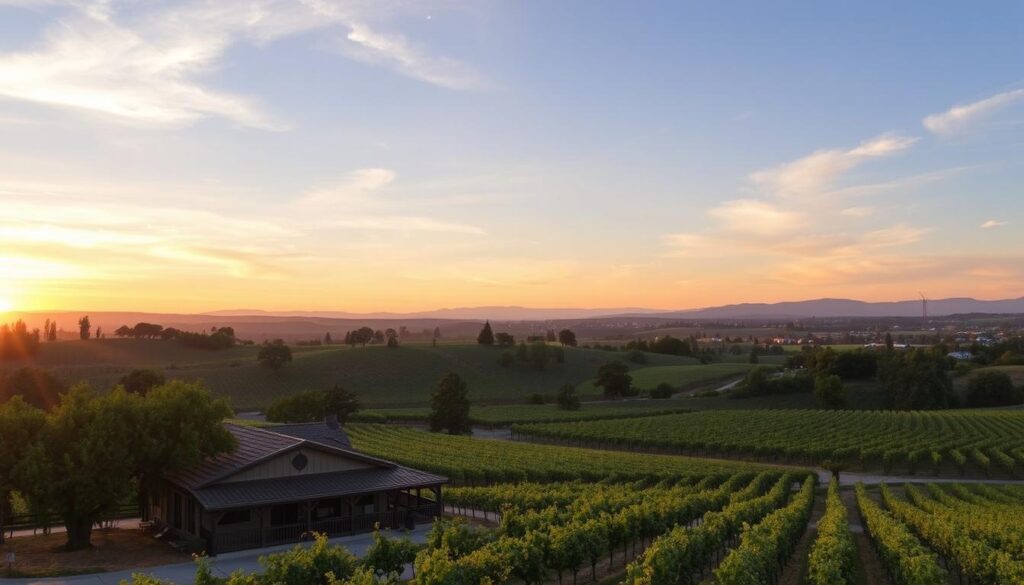
Wine Tasting Tours: What to Expect
Embarking on wine tasting tours offers a delightful way to experience the rich world of wine. Travelers can find a variety of options tailored to their preferences, ensuring an unforgettable wine travel experience. Understanding the different types of tastings available and how to choose the right tour for your interests will make your journey even more rewarding. There are wine tours and tastings available in every major wine region around the world, from Napa Valley to Tuscany to Mendoza. Some tours may focus on a specific variety of wine, such as Pinot Noir or Chardonnay, while others may offer a more comprehensive experience, including visits to multiple wineries and vineyards. By researching and selecting the best wine tours and tastings for your preferences, you can ensure a truly immersive and enjoyable experience.
Types of Wine Tasting Experiences
Wine tasting experiences come in several forms, allowing each visitor to find what suits them best. Common types include:
- Self-Guided Tours: Ideal for those who want flexibility and independence.
- Public Group Tours: Great for meeting fellow wine enthusiasts and enjoying a shared experience.
- Private Guided Tours: Designed by wine experts, offering personalized insights and tailored experiences.
- Multi-Day Tours: Perfect for immersing yourself in the region’s wine culture over an extended period.
When selecting a tour, consider how it aligns with your wine preferences. If you’re a fan of Cabernet Sauvignon, Napa Valley should be on your itinerary. Pinot Noir enthusiasts may prefer Sonoma County, while Chardonnay lovers might find bliss in California’s Central Coast AVA.
How to Choose the Right Wine Tour for You
Choosing the right wine tour requires careful consideration of multiple factors. Start by defining your wine tasting goals and interests. You’ll want to explore the unique characteristics of wines from various sub-regions, such as the left bank and right bank in Bordeaux. It’s essential to plan your trip according to the operational hours of wineries since some may close during winter or harvest months.
Factors to keep in mind include:
- Accommodation Options: Decide whether you want to stay in nearby cities, traditional bed & breakfasts, or on-site at a winery’s hotel.
- Budget: Tasting fees can range significantly. Opting for premium tastings enhances the experience and may include valuable extras.
- Timing: Avoid the peak tourist seasons of August to October for a more tranquil experience; consider visiting in early November or during spring.
- Reservations: For specific tastings or smaller wineries, advanced reservations are often necessary to ensure your spot.
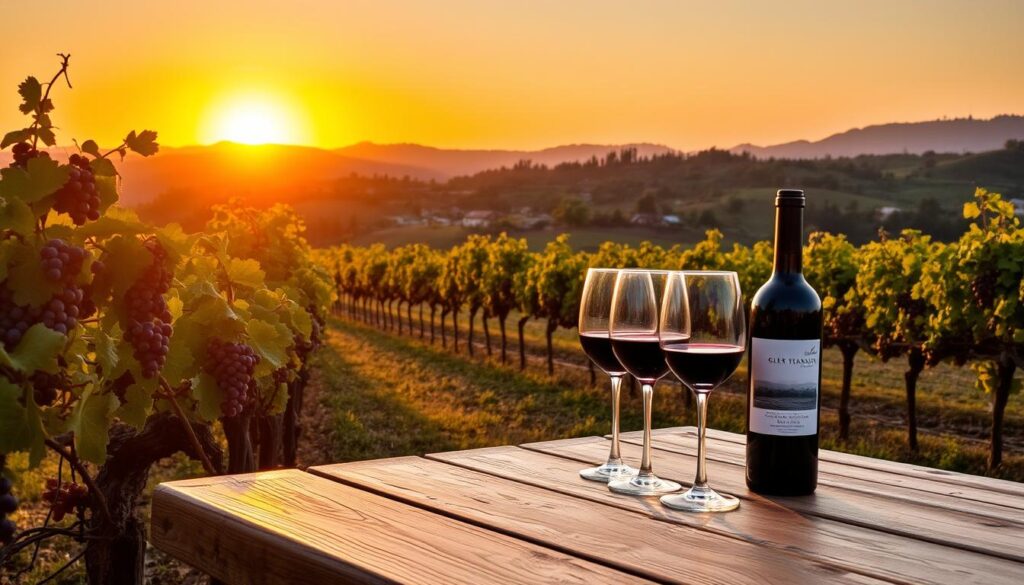
Remember, a well-planned itinerary can enhance your overall experience while promoting responsible wine consumption. Limiting yourself to three wineries a day allows for a balanced exploration of the region without overwhelming your palate.
Unforgettable Vineyard Tours and Wine Experiences
When you visit wine country, enriching your experience with vineyard tours is essential. These tours allow you to explore the inner workings of some of the finest wineries, offering an in-depth look at the art of winemaking. You can find a variety of unique wine experiences that cater to different interests and preferences, making each visit a memorable adventure.
Behind-the-Scenes Winery Tours
Many wineries provide exclusive behind-the-scenes tours that go beyond traditional tasting experiences. For instance, at Pine Ridge Vineyards in the Stags Leap District AVA, visitors enjoy an Explorer’s Tasting, which includes a guided walk through the vineyard and an exciting exploration of the wine caves. Judd’s Hill Winery offers a fun Bottle Blending Day Camp, where guests can create their own blend and take home a personalized bottle.
At Hess Persson Estate, you can traverse the vast 1000 acres on ATV tours that showcase the stunning landscape while learning about the vineyard’s history and techniques. Raymond Vineyards takes it a step further, allowing guests to be a ‘Winemaker for a Day,’ where you can design your own custom red blend and label.
Interactive Vineyard Activities
Interactive activities add a playful twist to vineyard tours. Shadybrook Estate Winery offers horseback riding through their picturesque vineyards, complemented by wine tasting and delicious cheese pairings. You can also head to Cuvaison Estate Wines, which features guided hikes through the scenic Carneros vineyards, making for an invigorating wine experience.
For those seeking a unique culinary adventure, Clif Family Winery hosts street food pairings and a delightful Rise & Wine brunch experience. The Napa Valley Wine Train presents an extraordinary combination of culinary experiences with carefully curated wine pairings while you enjoy breathtaking views of the valley.

Planning Your Wine Country Vacations
Embarking on wine country vacations involves thoughtful planning to ensure you have the best experience possible. Understanding the best times to visit can significantly enhance your trip. Each season offers something unique, making it essential to tailor your visit according to what you wish to enjoy.
Best Times to Visit Wine Country
Wine country is known for its beautiful landscapes and rich traditions. The optimal times to visit largely depend on the specific region, with significant climate differences between the northern and southern hemispheres. Winter, particularly from January to early March, provides a peaceful atmosphere ideal for enjoying wineries without the hustle and bustle of crowds. During this period, you can experience average temperatures in Napa and Sonoma Counties ranging from 40 to 58 degrees Fahrenheit, with highs reaching up to 67 degrees by March.
For those interested in the harvest seasons, keep in mind that the southern hemisphere sees its harvest from February to April, while the northern hemisphere boasts harvest activities from August to October. Visiting during these months allows you to witness the winemaking process in action, often accompanied by various events and activities.
Essential Tips for First-Time Visitors
First-time visitors to wine country should prioritize booking winery visits in advance, particularly during peak months. Aim to book at least a month ahead to secure your preferred experiences. Differentiating between small, family-run boutique wineries and large, internationally recognized ones is vital for crafting a memorable itinerary.
Most wineries today offer more than just wine tastings; look for experiences like cooking classes, gourmet picnics, and traditional meals integrated into your visit. You don’t need extensive wine knowledge or tasting skills to enjoy these outings; the focus is on relaxation and savoring the atmosphere. When planning to bring wine back home, be strategic in packing, as many wineries abroad do not ship products to the US. Weekday visits are encouraged to sidestep crowds and make the most of your wine country vacations.
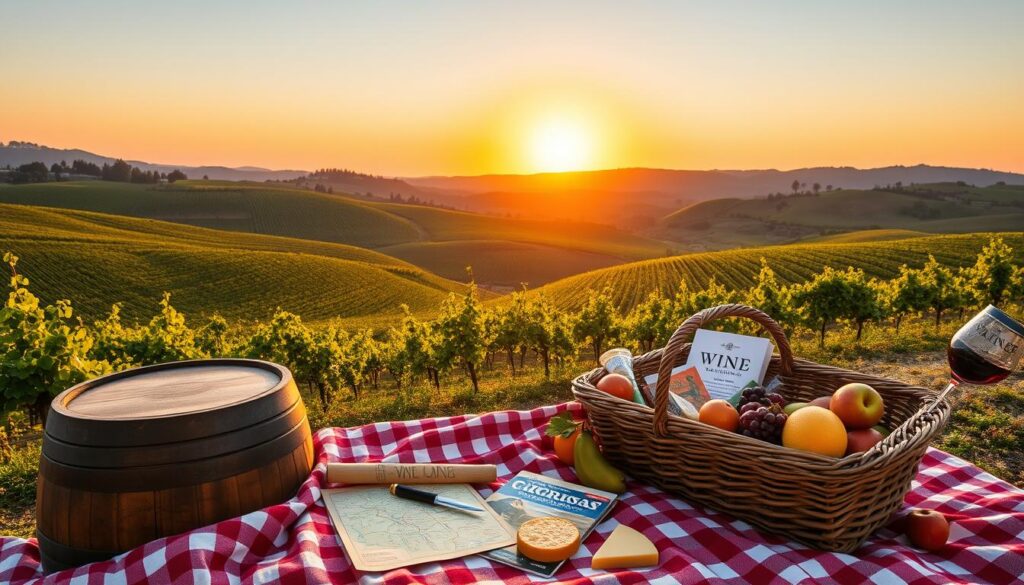
Dining and Culinary Treats in Wine Country
In wine country, the culinary scene rivals the breathtaking views and exceptional wines. You will discover a diverse range of dining options, highlighting local flavors and innovative pairings. From top-notch restaurants to vibrant food festivals, your taste buds are in for an unforgettable journey.
Top Restaurants Offering Perfect Wine Pairings
Explore the finest dining establishments where exceptional food meets exquisite wines. Notable locations include:
- La Toque: Offers a wine program with approximately 20,000 bottles, perfect for avid wine enthusiasts.
- French Laundry: Holds a Grand Award and features a 15,000-bottle cellar with over 2,400 selections.
- Brix Napa Valley: Houses a 3,000-bottle cellar focused entirely on California wines, ensuring a true local experience.
- St. Francis Winery: Provides a food and wine pairing experience curated by Executive Chef Peter Janiak.
- SingleThread Farm, Restaurant & Inn: A three Michelin star venue known for its highly sought-after seasonal menu.
Food and Wine Festivals You Shouldn’t Miss
The region comes alive during its annual food and wine festivals. Attending these events not only allows you to sample various culinary experiences but also to meet local chefs and winemakers. Look out for popular festivals, showcasing the best of what wine country has to offer.
Exciting festivals blend gourmet food and exquisite wines, enabling you to indulge in tastings and discover new favorites. Engaging directly with producers enhances your appreciation for local wines.
Local Farmers’ Markets and Artisanal Delights
For a genuine taste of wine country, visit local farmers’ markets. While exploring, you can find fresh ingredients directly from the source. Many restaurants in the area emphasize the importance of seasonal local produce from farms like:
- Shone Farm
- Lovelock Lettuce Laguna Farm
- Stemple Creek Ranch
Local markets offer everything from fruits and vegetables to artisan cheeses and handmade goods. These culinary experiences showcase the rich flavors of the region, enhancing your time spent in wine country.

Choosing the Right Accommodation for Your Stay
Finding the perfect accommodation to complement your wine country adventure greatly enhances your experience. Whether you prefer the unique charm of boutique hotels or a memorable stay at a winery, there are numerous options to explore. Each accommodation type offers distinct atmospheres that will enrich your time in these scenic landscapes.
Charming Boutique Hotels in Wine Country
Wine country is home to a variety of boutique hotels, each equipped with its own style and character. Many of these accommodations provide intimate settings alongside exquisite services, ensuring a cozy and welcoming environment. For instance, Meadowood Napa Valley offers luxurious lodgings on expansive private grounds, allowing guests to unwind amidst nature. The Meritage Resort and Spa, with its modern amenities, provides a relaxing retreat close to the vineyards.
- Stanly Ranch: Spanning 712 acres, this resort features 78 standalone cottages designed for comfort.
- Wine Country Inn and Cottages: This property combines elegance with pet-friendly options, ideal for traveling with furry companions.
- Calistoga Motor Lodge: This hotel captures the nostalgic vibe of a 1950s motel while still providing modern comforts.
Staying at Wineries: A Unique Experience
Staying directly at a winery adds an extra layer of immersion in your wine country experience. Many wineries offer accommodations that allow you to wake up surrounded by picturesque vineyards. For example, Abbey Road Farm in Carlton, Oregon, integrates lodging as a crucial part of their hospitality experience. Guests at Youngberg Hill enjoy the inn’s welcoming atmosphere, with room options that boast stunning views of the surrounding vineyards.
| Winery Accommodation | Location | Details |
|---|---|---|
| Abbey Road Farm | Carlton, Oregon | Lodging integral to events and vineyard stays. |
| Youngberg Hill | McMinnville, Oregon | Nine rooms available for bed and breakfast. |
| Lumos Wines | Philomath, Oregon | One-bedroom cabin for two guests. |
| Colter’s Creek Winery | Moscow, Idaho | Four boutique rooms for self-check-in. |
| Bianchi Vineyards | East Wenatchee, Washington | Two-bedroom house and RV spots. |

Wine Regions to Visit: An Overview
When exploring the wine regions to visit, understanding the unique qualities of each area can enhance your experience. Among the most celebrated are Napa Valley, Sonoma Valley, and Santa Barbara, each with distinct charm and exceptional wines. This overview highlights what makes these regions stand out.
Distinct Qualities of Napa Valley, Sonoma Valley, and Santa Barbara
Napa Valley is often regarded as the crown jewel of California’s wine production. Renowned for its stunning landscapes and luxurious wineries, this region primarily produces world-class Cabernet Sauvignon, Chardonnay, and Merlot. Visitors can enjoy scenic vineyard views along with countless tasting opportunities at renowned estates.
In contrast, Sonoma Valley is celebrated for its more organic and laid-back atmosphere. The region excels in producing quality Pinot Noir, Cabernet Sauvignon, and Chardonnay. With a rich agriculture scene, Sonoma boasts a diverse selection of vineyards, including smaller boutique wineries that offer personalized tasting experiences.
Santa Barbara, a less crowded but equally enchanting destination, offers a distinct mix of coastal breezes and sun-drenched vineyards. Known for its emphasis on artisanal wine production, the region produces excellent Pinot Noir and Chardonnay. The beautiful landscapes and charming towns create a welcoming environment for wine enthusiasts and travelers alike.
Each of these regions provides visitors with unique experiences that cater to different tastes and preferences, ensuring that your wine journey is both memorable and enjoyable.
| Region | Key Varietals | Atmosphere | Highlight |
|---|---|---|---|
| Napa Valley | Cabernet Sauvignon, Chardonnay, Merlot | Luxe, Scenic | World-class wineries |
| Sonoma Valley | Pinot Noir, Chardonnay, Cabernet Sauvignon | Relaxed, Diverse | Boutique wineries |
| Santa Barbara | Pinot Noir, Chardonnay | Artisanal, Coastal | Beautiful landscapes |

Tips for Successful Wine Travel Experiences
Embarking on wine travel experiences can be both exciting and rewarding. To enhance your adventure, consider some essential tips for maximizing your enjoyment. Successful wine tasting involves more than just sampling; it’s about savoring each moment and flavor that you encounter. Following these insights will help you create unforgettable memories during your wine tour.
How to Savor Every Sip During Wine Tastings
Wine tastings offer unique opportunities to explore different varietals and regions. To truly appreciate each sip, engage your senses fully:
- Take your time: Allow yourself to enjoy each tasting, exploring the color, aroma, and flavor profiles.
- Ask questions: Interaction with knowledgeable staff or sommeliers can deepen your understanding and enhance your tasting experience.
- Note your favorites: Keeping a notebook will help you remember which wines you loved and wish to explore further.
- Stay hydrated: Drinking plenty of water between tastings can elevate your palate and help you enjoy the nuances of each wine.
- Pace yourself: Visiting multiple wineries in a day can be taxing, so spacing out your tastings is crucial.
Pro Tips for Collecting Wine While Traveling
For many, enhancing their wine collection during travel is a highlight. Follow these practical strategies to make wine collecting seamless:
- Plan for shipping: Many wineries offer shipping services, making it easy to send your purchases home without hassle.
- Understand local regulations: Familiarize yourself with state laws regarding alcohol shipments to avoid complications.
- Use a travel kit: Pack essential items such as bubble wrap, a sturdy box, and a cooler bag to protect your bottles.
- Be selective: With so many wines available, choose those that resonate most to ensure a collection you’ll treasure.
- Stay organized: Keep receipts and labels for easy reference when managing your collection at home.

Getting Around in Wine Country
Exploring wine country offers a variety of transportation options to make your adventure both enjoyable and convenient. Whether you prefer to drive yourself or take advantage of guided services, you have ample choices to suit your needs. This makes navigating the stunning landscapes and numerous wineries an exciting experience.
Transportation Options for Your Wine Adventure
Wine country features over 400 wineries, providing visitors with countless opportunities to indulge in tastings and tours. Convenient transportation methods include:
- Rental Cars – Companies like Sixt offer rental options at multiple locations, located in San Francisco International Airport and downtown, making it easy for you to drive through Napa Valley or Sonoma County.
- Trolley Tours – The Napa Valley Wine Trolley and Sonoma Valley Wine Trolley offer an entertaining way to visit 3 or 4 wineries, with scheduled stops and dining options along the way.
- Designated Driver Services – Hire a designated driver for private tours. Companies provide licensed drivers to ensure a fun and safe experience while you sample various wines.
- Private Tours – Enjoy personalized excursions with boutique operators such as Pure Luxury Transportation, offering dedicated drivers and access to exclusive wine experiences.
Exploring Wine Country by Bicycle: A Fun Choice
For the more adventurous spirits, exploring wine country by bicycle presents a fun and active alternative. The Napa Valley Vine Trail features a 47-mile bike path, allowing you to pedal through picturesque scenery and stop at some of the best wineries, including Seghesio Family Vineyards and Longboard Vineyards. Companies like Sonoma Valley Bike Tours and Ace It! Bike Tours can guide your biking adventure. Enjoy the sights while savoring the local wines in a unique way that integrates outdoor activity with wine appreciation.

| Transportation Option | Details |
|---|---|
| Rental Cars | Flexibility to explore at your own pace. |
| Trolley Tours | Guided tours stopping at multiple wineries. |
| Designated Driver Services | Hire licensed drivers for a worry-free experience. |
| Bicycle Tours | Active exploration with scenic stops at wineries. |
| Private Tours | Customized experiences with dedicated drivers. |
Conclusion
As you embark on your journey through the wine country, you’ll discover a tapestry of breathtaking vineyards, rich history, and exceptional wines. Whether you find yourself enjoying the rolling hills of Sonoma County, known for its 400-plus wineries and remarkable soil diversity, or exploring Napa Valley’s vibrant towns, the experiences awaiting you are nothing short of magical. Each region offers unique attractions—from enthralling vineyard tours to immersive tastings—that ensure you gain a deeper appreciation of the winemaking process.
Remember to plan your visit wisely, as the wine country thrives during the harvest season from August to October. However, don’t overlook the serene beauty of winter’s Cabernet season or the vibrant life that spring brings to the vines. Whichever season you choose to visit, the charm of wine country will envelop you, inviting you to savor exquisite varietals like Pinot Noir and Zinfandel.
By embracing the full scope of what wine country has to offer, you can create unforgettable memories surrounded by stunning landscapes and delightful flavors. Get ready to sip, savor, and explore this captivating world, ensuring your time spent in wine country is as enriching as it is enjoyable.

